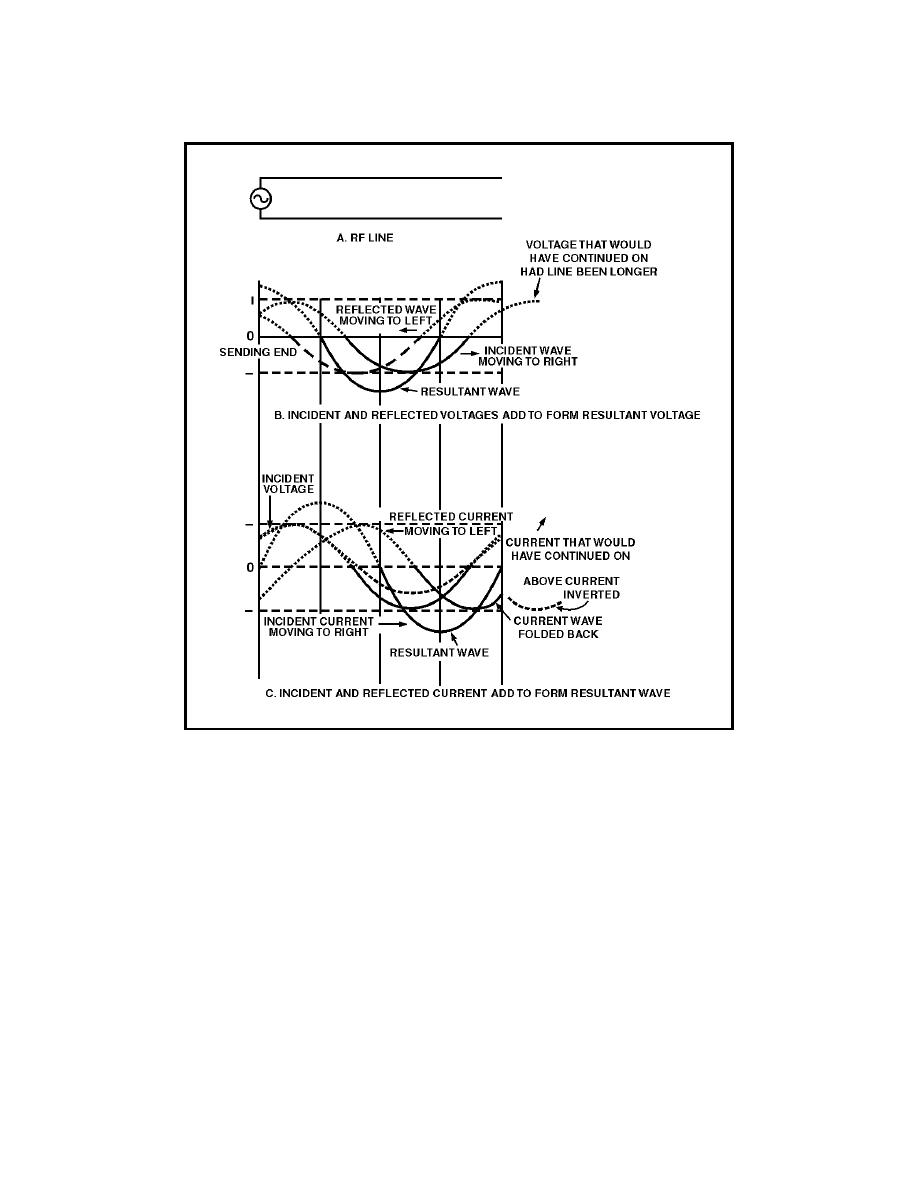
TC 9-64 _________________________________________________________________________
Figure 3-26. Formation of Standing Waves
3-101. View B of figure 3-26 shows how two waves of the same frequency
and amplitude moving in opposite directions on the same conductor will
combine to form a resultant wave. The small solid line is moving steadily
from left to right and is the incident wave (from the source). The broken-line
waveform is moving from right to left and is the reflected wave. The resultant
waveform, the heavy line, is found by algebraically adding instantaneous
values of the two waveforms. The resultant waveform has an instantaneous
peak amplitude that is equal to the sum of the peak amplitudes of the
incident and reflected waves. Because most indicating instruments are
unable to separate these voltages, they show the vector sum. An oscilloscope
is usually used to study the instantaneous voltages on RF lines.
3-102. Because two waves of voltage are moving on the line, you need to
know how to distinguish between the two. The voltages moving toward the
receiving end are called incident voltages, and the whole waveshape is called
the incident wave. The wave moving back to the sending end after reflection
3-32


 Previous Page
Previous Page
